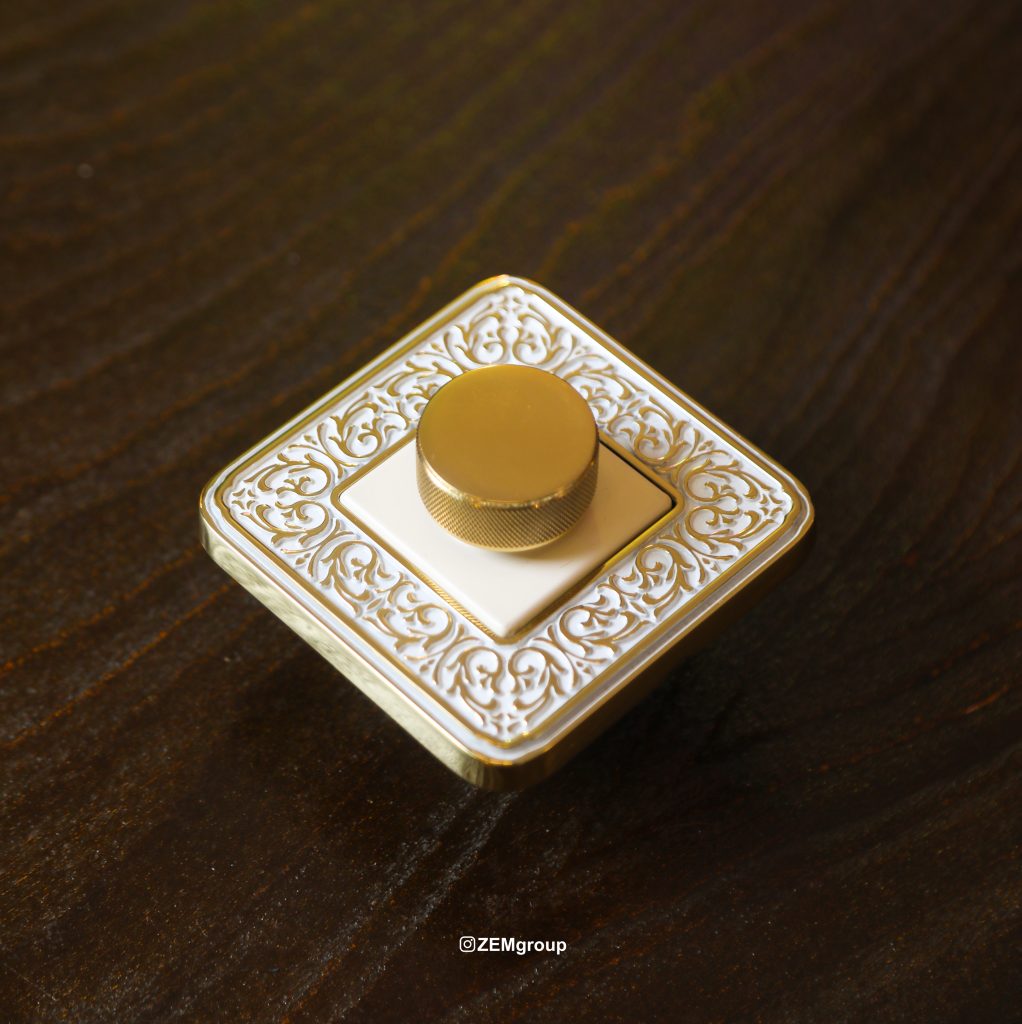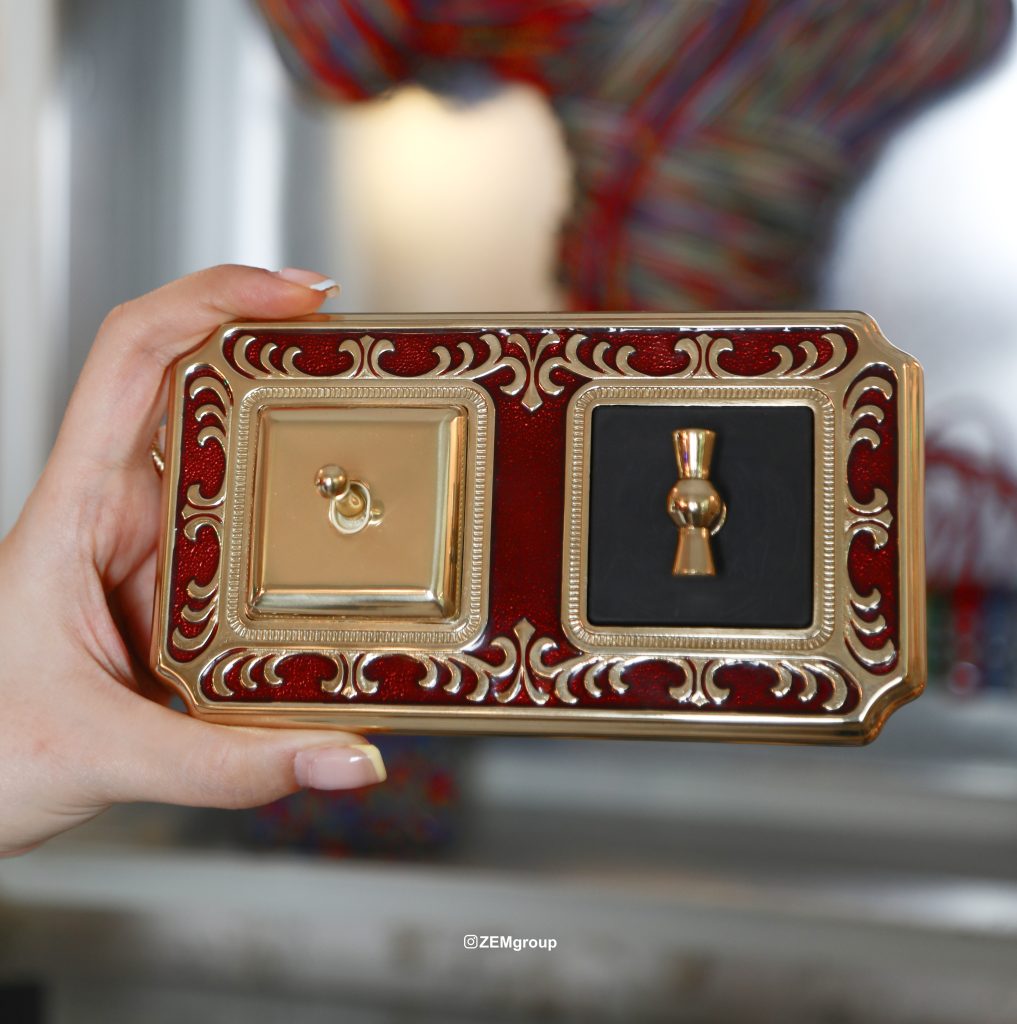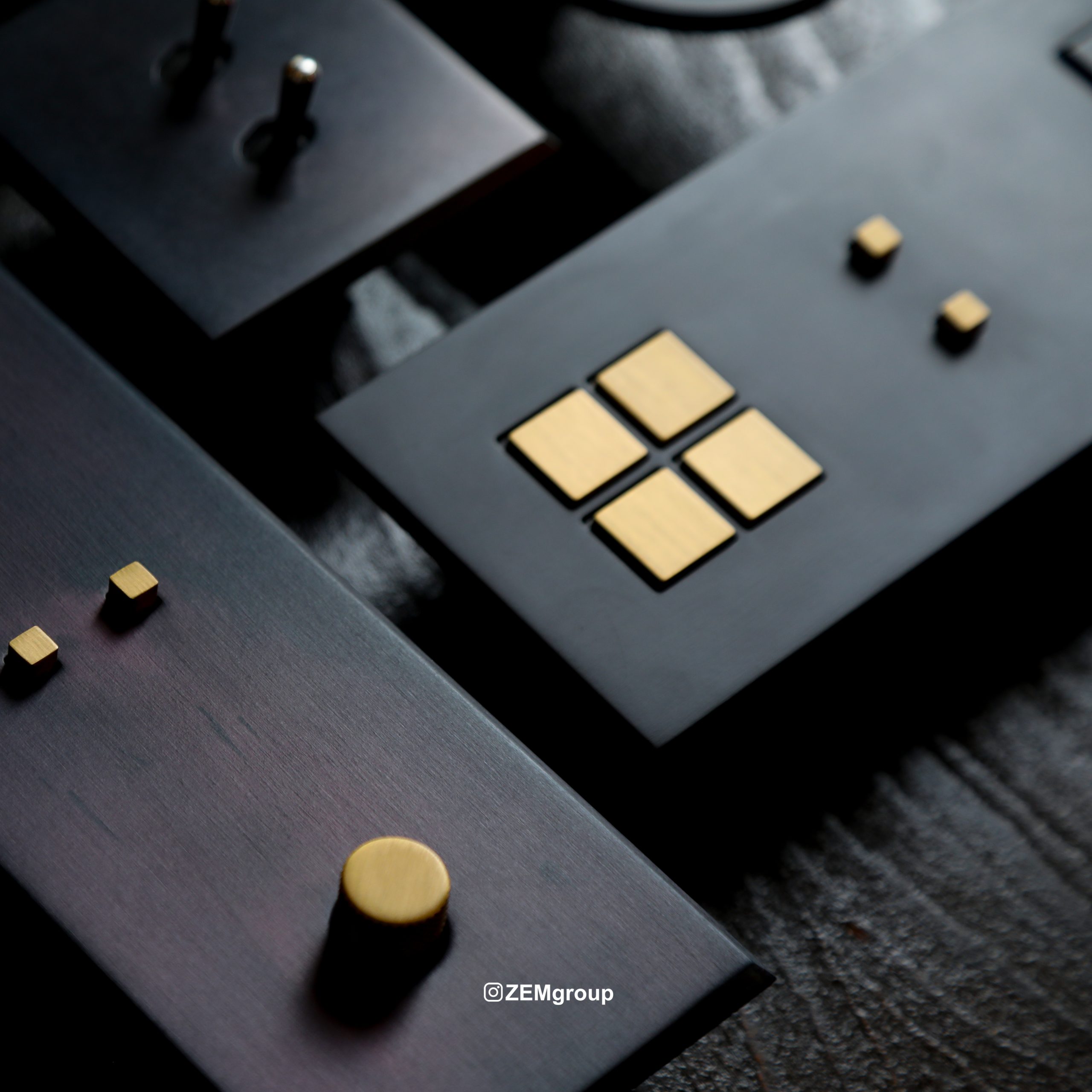In the design and production of luxury switches and sockets, the type of material plays a crucial role in quality, durability, visual appeal, and tactile experience. One of the most valuable and distinctive materials in this field is brass—a metal that not only offers strength and resilience but also gives the product a classic, authentic, and luxurious appearance. In this article, we will examine the features of brass and compare it with other commonly used materials in the market such as ABS, polycarbonate, and aluminum, to help you make a more informed choice for your living space or unique design projects.
Why Brass? A Noble Material for Unique and Luxury Switches and Sockets
Brass is an alloy of copper and zinc that has been used for centuries in the creation of decorative, artistic, and industrial objects. In luxury switches and sockets, brass not only provides a distinctive, shiny, and timeless look, but it also outperforms other materials in terms of durability, corrosion resistance, and tactile sensation.
Key Features of Brass in Switches and Sockets
-
Timeless and Authentic Look: The natural color of brass—whether polished, brushed, or patinated—adds a sense of elegance and sophistication to any space.
-
Exceptional Durability: High resistance to corrosion, wear, and discoloration over time.
-
Eco-Friendly and Recyclable: Unlike plastics, brass is a sustainable material.
-
Unique Tactile Experience: The cool, heavy metallic feel of brass conveys a premium and luxurious sensation.
Brass switches and sockets are mostly used in classic, neoclassical, traditional, and luxury modern interiors. To explore different models, visit the Luxury Switches and Sockets section of our website.

Comparison of Brass with Other Common Materials
1. ABS: A Budget-Friendly and Lightweight Option
ABS plastic is widely used in economical and mass-produced switches and sockets. It’s lightweight, inexpensive, and moderately durable, but it lacks the visual appeal and luxurious feel of brass.
| Feature | Brass | ABS |
|---|---|---|
| Durability | Very High | Moderate |
| Aesthetic Appearance | Classic & Elegant | Plain & Matte |
| Heat Resistance | High | Moderate |
| Touch & Feel | Heavy & Metallic | Light & Plastic |
| Price | High | Low |
2. Polycarbonate: A Strong and Modern Plastic
Polycarbonate is more durable than ABS and is often used in modern designs featuring glossy, semi-transparent, or clear finishes. It is resistant to heat, impact, and UV radiation. While it offers a sleek look, it lacks the heritage and warmth that brass brings.
| Feature | Brass | Polycarbonate |
|---|---|---|
| Visual Appeal | Traditional & Classic | Modern & Glossy |
| Scratch Resistance | High | High |
| Longevity of Appearance | Very High | Good |
| Touch & Feel | Metallic & Authentic | Soft & Lightweight |
| Price | High | Moderate to High |
3. Aluminum: A Lightweight Metal with an Industrial Feel
Aluminum is another popular metal in the production of modern and industrial-style switches and sockets. It is lightweight, heat and corrosion-resistant, and typically comes in metallic finishes or anodized coatings.
| Feature | Brass | Aluminum |
|---|---|---|
| Visual Appeal | Warm & Classic | Cold & Industrial |
| Weight | Relatively Heavy | Lighter |
| Touch & Feel | Warm & Authentic | Cold & Metallic |
| Color Variety | Wide (hand-finished) | Limited to Anodized |
| Overall Durability | Very High | High |
Aluminum is well-suited for industrial or minimalist interiors, but brass remains the top choice for classic and luxury decors.
Why Brass Is the Top Choice for Luxury Switches and Sockets
Despite the wide range of materials available on the market, if you’re seeking a combination of timeless beauty, superior durability, and a truly luxurious feel, brass is the obvious choice. This material serves both a decorative and functional role in interior design and is unmatched in spaces such as:
-
Luxury villas and residences
-
Executive offices
-
Boutique hotels
-
Art galleries and exhibition spaces

Frequently Asked Questions
Are brass switches and sockets really more durable than plastic ones?
Yes. Brass offers excellent resistance to corrosion, pressure, and impact. Unlike plastics, it does not discolor or crack over time.
How does brass differ visually from aluminum?
Brass has a warm, natural, and classic appearance, while aluminum has a cool, industrial look. Choosing between them depends on your interior design style.
How resistant is brass to moisture and corrosion?
Extremely resistant. The combination of copper and zinc in brass makes it highly durable in humid environments and protects it from rust.
Are brass switches and sockets heavier?
Yes, but this added weight actually enhances the feeling of strength and high quality for the user.

